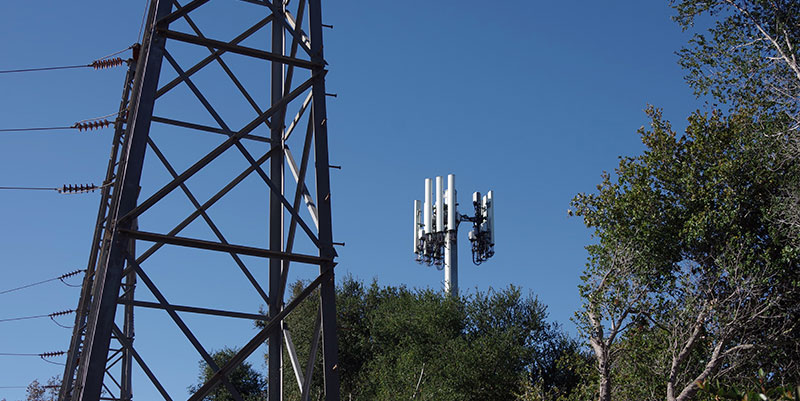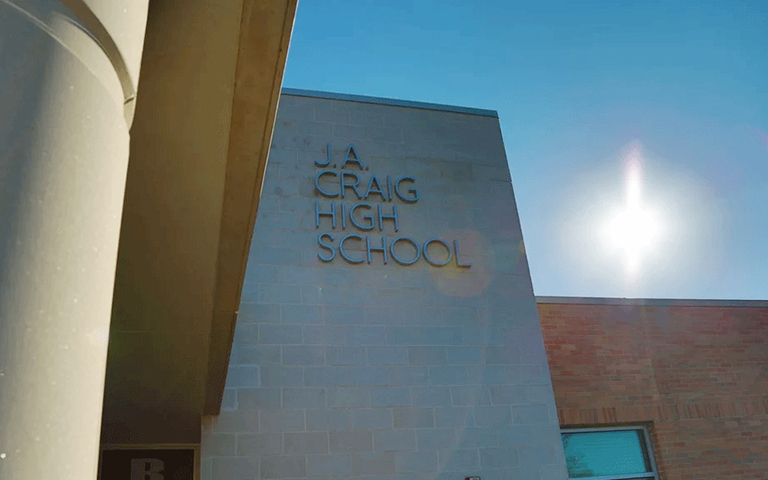READ THE FULL STORY
How can your organization duplicate these incredible results?
Get details on how Janesville School District:
- accomplished its goals
- provided remote learning during pandemic
- reinvested in education technology by partnering with UScellular for wireless solutions.
Dr. Robert Smiley joined the Janesville School District as Chief Information Officer in 2012 and quickly recognized the need to overhaul resources to expand opportunities for students. He knew that technology tools were key to enhancing learning and making it equitable. To achieve his mission, he sought a vendor that would also be his strong partner.
“We made a conscientious effort to meet with UScellular every month and literally whittle away at the problems until today… we don’t have those meetings because we don’t need them. Everything is functioning smoothly. It’s all about having UScellular as a partner,” he said.
“I’d like to be a model for other schools as they build out their own infrastructure environment, so all kids have an equal opportunity to learn. I’ve been blessed with an opportunity to do some amazing things and I’d like to be able to offer that to the larger K-12 community.”
— Dr. Robert Smiley, CIO, Janesville School District
Dr. Smiley said that this flourishing partnership has elevated efficiency and productivity for the 9,500-student school district in southern Wisconsin.
Ten years later, the relationship is strong, and Dr. Smiley continues to focus his efforts and passion toward modernizing student learning through technology and ensuring all students—regardless of income—have access to internet and the resources they need to learn.
Bridging the Equity Gap
Dr. Smiley has worked tirelessly to bridge the disproportionate gap in technology between urban and rural students, especially for migrant and transient populations. “We’re looking through that lens to make sure that all of our children have equal access to technology,” he said.
Homeless and low-income students faced additional challenges when COVID closed the schools on March 18, 2020. Faced with just five days to send devices home with kids, his team distributed iPads or Chromebooks, depending on their age, to all students. But not everyone could access the internet at home—or wherever they spent their nights. So, the school district worked with social workers and guidance counselors to identify families who had the greatest need and provided 200 routers to students with no home internet.
Furthermore, when the school was thrust into an all-digital environment, there were many details to work out (like purchasing power chargers for tablets that formerly were wired into classroom carts), but Janesville School District didn’t have to worry about the network and scale because they had UScellular as a trusted ally.
“UScellular really stepped up as a partner. We did not have routers for kids. We didn’t know how big the need was going to be. Some kids had home access but with 9,500 students and a lot of teachers, all of a sudden, we had to flip to online learning. It was a nightmare, and UScellular really stepped up and helped us,” Dr. Smiley said.
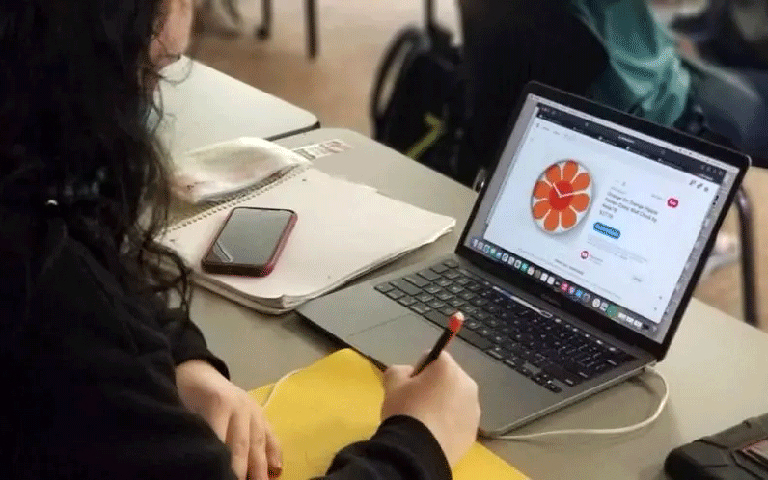
A Janesville student works on her assigned Chromebook with the internet to do her schoolwork.
Internet as Essential as Utilities
Whether students learn in school, fully remotely or in a hybrid arrangement, they require reliable internet resources.
“We have had more families realize that home internet access is much like water and electricity and gas. It is a required utility,” Dr. Smiley said. “You just can’t function in today’s society without it, regardless of your social economic status.
“You’ve got a robust wireless network. I don’t think we will ever be able to overwhelm UScellular—your solutions, your towers—in anything that we’ve done. Kudos for building an infrastructure that’s never gone down. I appreciate that UScellular is making internet available to our families in a way that’s sufficient and resilient,” Smiley said.
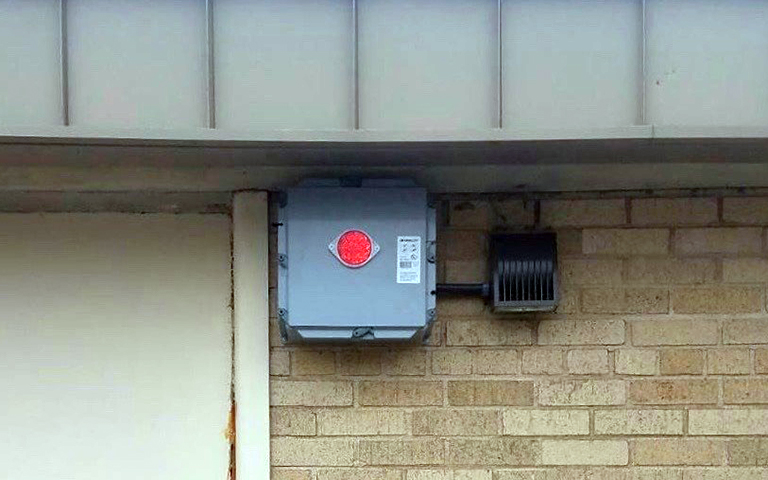
A Wi-Fi box transmits internet to area students.
Securing Assets Across the School District
Smiley’s team looked to its UScellular partner to understand its needs and propose additional solutions to help implement and maintain assets, such as monitoring heat and humidity in data closets throughout the district to prevent damage. “The device also shows us when it flips to battery and when it comes back, so I will know a school is out of power even before the maintenance department does,” he said. “I would have never known about monitors for the equipment closets had UScellular not come forward with that.”
The district relies on UScellular for its 140 smartphones, 12 routers for public Wi-Fi near sides of buildings, and MiFi hotspots, plus mobile device management to remotely manage their devices and wipe them if they are stolen or misplaced. It also employs CIPA filtering to protect students from inappropriate content.
When the school district was attacked by a ransomware virus that destroyed its network, Dr. Smiley worked alongside its wireless partner to create a private network and restore traffic in just a few days. He credits UScellular products and services that “came to the rescue until we could get the internet back up and running. We all have vendors, but UScellular is a partner in this work and I’m so proud of them being that partner.”
Account Manager Jess Feucht remembers the incident well. “I was on the road with another rep and while I led the charge and was directing, she was able to move hotspots to people who needed them. Next, we moved traffic to the general internet while our engineer did remote setup with school IT contacts. Within a day or two, we were able to move traffic away from their servers out to UScellular.”
“Best in Class” Initiatives
Smiley is well known for his technology initiatives and always strives to be “best in class.” He and his team are working to create a sustainable foundation for end-user devices to prevent a funding cliff. “People might say, ‘these iPads are old, and we have no money to replace them,’ or ‘these Chromebooks are all broken.’ So, we’re leveraging E-Rate dollars to fund that,” he said.
From an application point of view, the school district is moving all resources to a digital environment. “We just bought new English language arts textbooks and every kid needs to be able to access them from their iPad. Now magnify that out into every math, science and social studies book and the underpinning of that is that all of those materials are now subscription based. You’ll never have another 20-year-old paper textbook. What you’ll have is a textbook that gets updated every year on a subscription model. It’s really changing the foundation of electronic resources for kids,” he said.
Smiley also acknowledged that COVID helped education leapfrog ahead, with video and learning applications that poured millions of dollars into redesign to facilitate remote learning. The tools for digital learning are really advanced.”
Fixed Wireless Internet
As CIO, Dr. Smiley’s concerns go far beyond just connecting students while they are on campus. He’s partnering with UScellular to test fixed wireless internet at the high school that can transmit to remote students. “I would have never really thought about or had the potential for a wireless redundant internet solution if UScellular hadn’t come forward with high-speed internet.
“We are proud that UScellular is really making the effort to see what they can do for rural families,” Dr. Smiley said. “I can’t tell you how many times I had teachers during COVID say, ‘but I live on a farm 8 miles from town and I can’t teach remotely’.
“When the schools were closed, it was a huge problem. Well now skip forward. You’ve still got those families living remotely who can’t do their homework and the teacher says, ‘I want you to watch this 18-minute video tonight and come in prepared for discussion tomorrow’. And the rural kids are saying, ‘I can’t do this at home. I can barely get an email let alone a video.’ So, we do really have some challenges on the rural side of the house.
“When the chance came up to offer our site to work with UScellular so we can demo this, it’s really about me, saying ‘let’s have an impact on the whole southern region of Wisconsin and show them what really could happen’. It’s me, wanting to give back to UScellular so we can actually continue to improve people’s lives,” Dr. Smiley said.
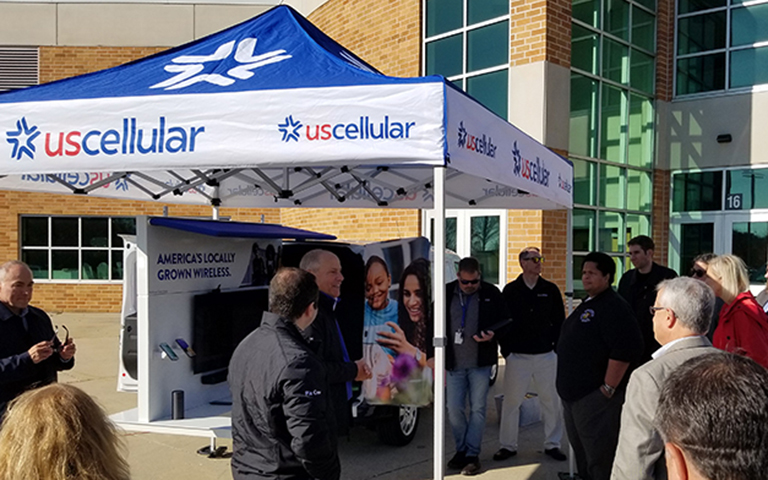
UScellular broadband leaders introduce high-speed internet to the community.
Recognition and a Role Model
Dr. Smiley is passionate about providing his students digital-age literacy, while ensuring his staff is equipped with tools for high productivity. In 2017, Janesville School District received the ‘Wisconsin Forward Award’ for its commitment to students. Technology improvements are only part of the vision Smiley has for giving students the skills to succeed.
His team of 12 is very focused on results. “I have an amazing group of people, but I also have an amazing group of vendor partners, like UScellular, so combine that and it’s like it’s a mixture for success.”
Smiley’s program is getting nationwide recognition—he recently appeared in Toggle magazine. The publication features CTO and CIO profiles and examines how technology is transforming organizations.

Adams Elementary School
Moving Forward as a Partner
Smiley keeps his vendor list short so that he can create deep relationships. “There has been so much movement over the past decade as technology changed or emerged, UScellular was always there and remains there either to implement those solutions or bring them forward,” he said.
He looks forward to further evolving his technology and quickly responding to challenges like ransomware and COVID to provide better outcomes to schools and students.
Smiley is also working with UScellular to identify and support initiatives to:
- improve broadband or infrastructure for rural students and teachers
- add wireless security cameras in areas without fiber
- augment cellular services as a back-up to wired solutions
“There’s just so many places where we are better as a Janesville community because of our partnership with UScellular. I can’t imagine not having them here,” Dr. Smiley said.





